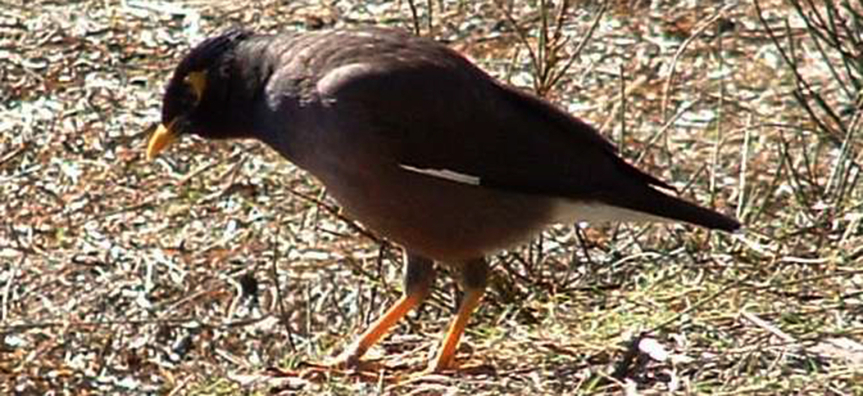
Common (Indian) mynas were first brought to Melbourne in 1862 to control pests in market gardens. Even though they weren't successful at this, they spread quickly. There are steps you can take to keep mynas away.
Why are Common (Indian) Mynas a problem?
Common mynas compete with native wildlife for nesting hollows and other habitat resources. They are also a pest of agricultural and urban areas, particularly around shopping areas and cafes.
Common Myna v Native Noisy Myna
The common myna was previously known as the Indian myna. It is chocolate-brown in colour with a black head and neck. It is often confused with the the noisy miner, which is a grey Australian native honeyeater that is protected under the Biodiversity Conservation Act 2016.
Keeping Myna Birds off your property
If you wish to control myna birds on your property, the best thing to do is to contact a local pest control company.
There are a number of steps you can take to assist to deter mynas from your property.
- Remove available food sources by feeding pets indoors or clear away their food when finished and ensure rubbish bin lids are closed and secured.
- Do not feed birds in gardens or parks.
- Make gardens less attractive to mynas by removing weeds, especially berry producing weeds such as Privet, Asparagus fern, Ochna, African olive and Camphor laurel and create a native garden using a good mix of locally native shrubby species.
- Block holes in your roof or eaves to remove nesting sites. Before you do so, make sure there aren’t any other animals such as possums or bats using the area, otherwise they’ll be trapped inside your roof.
- Help to identify common myna hotspots and monitor activity, including nesting and roosting sites, using the MynaScan website.
